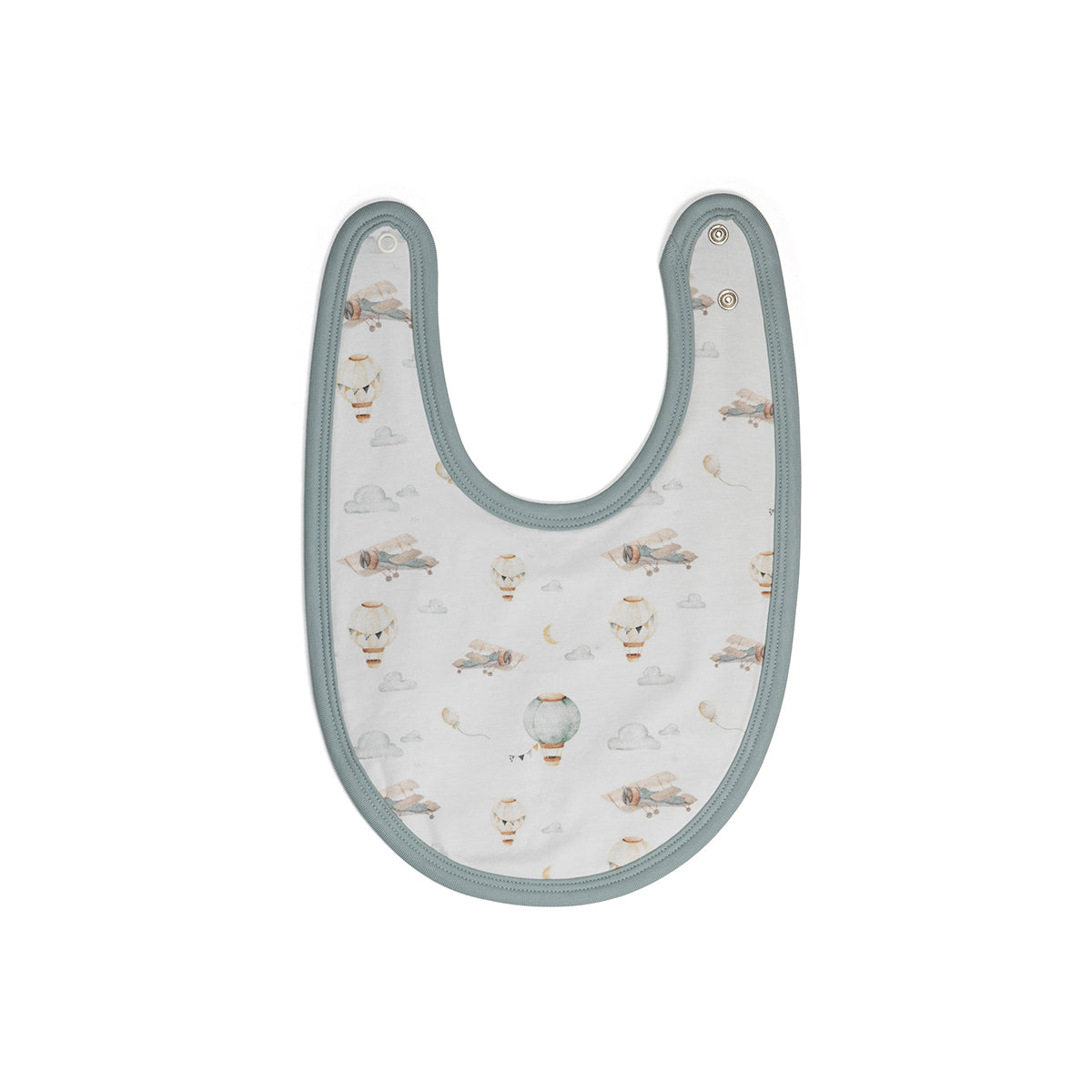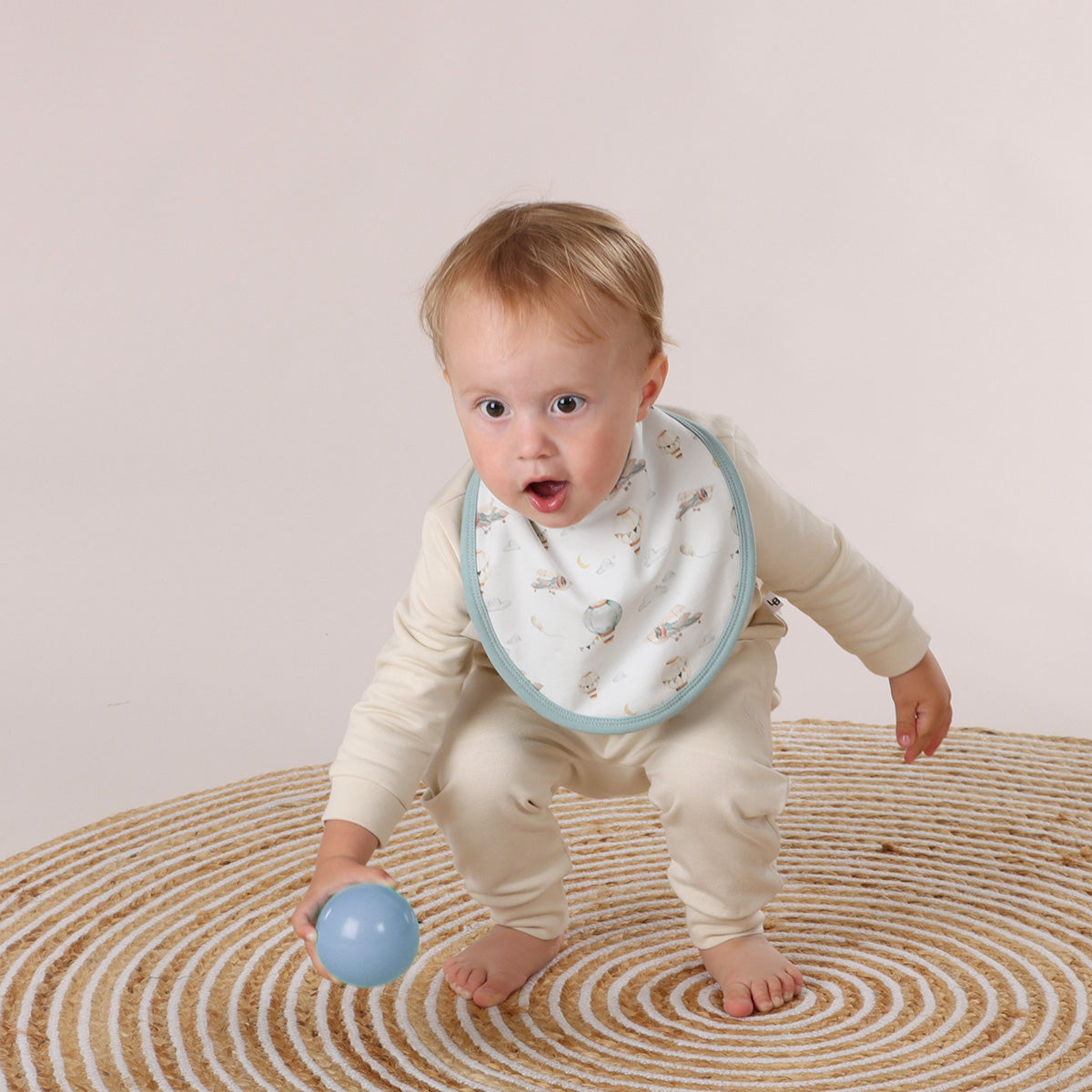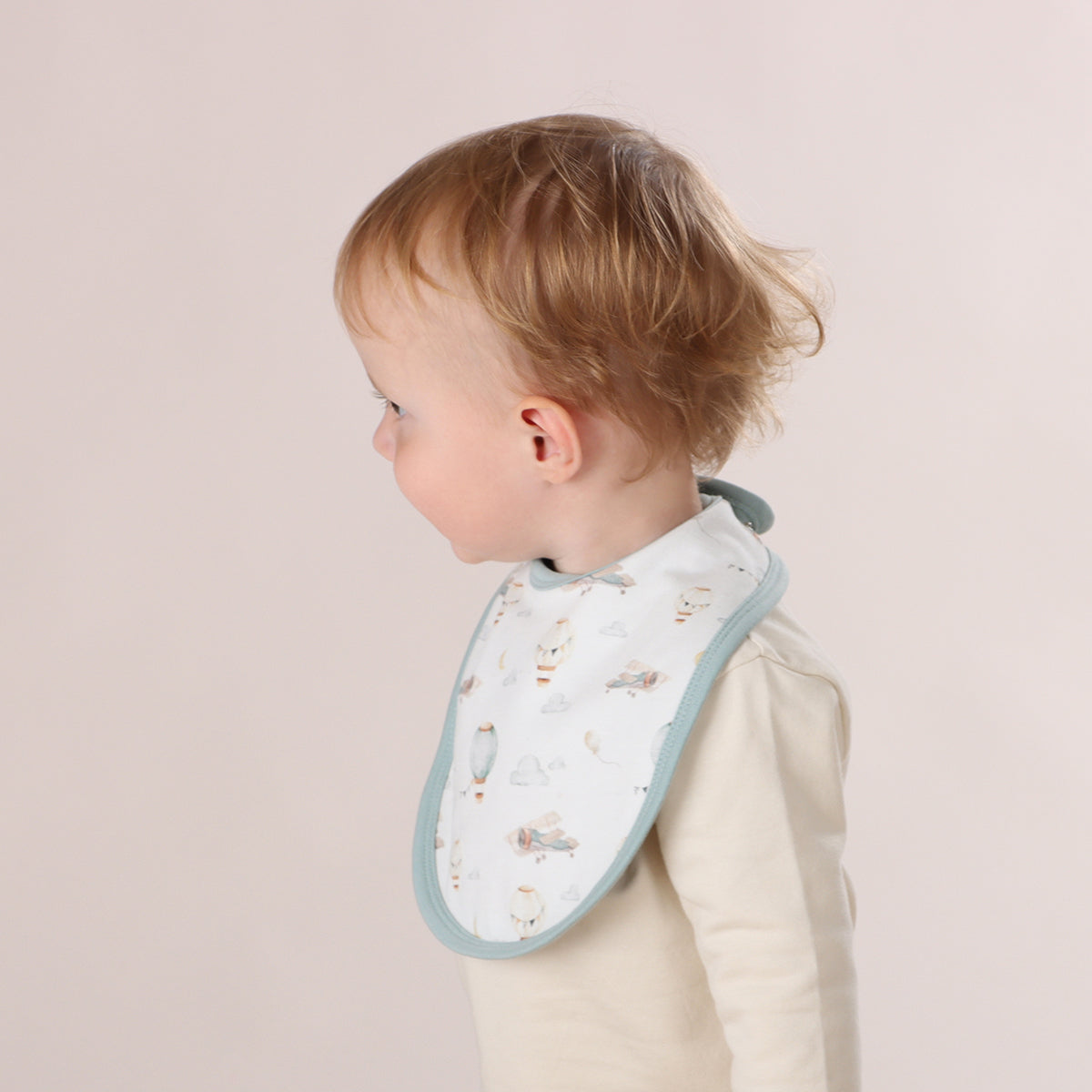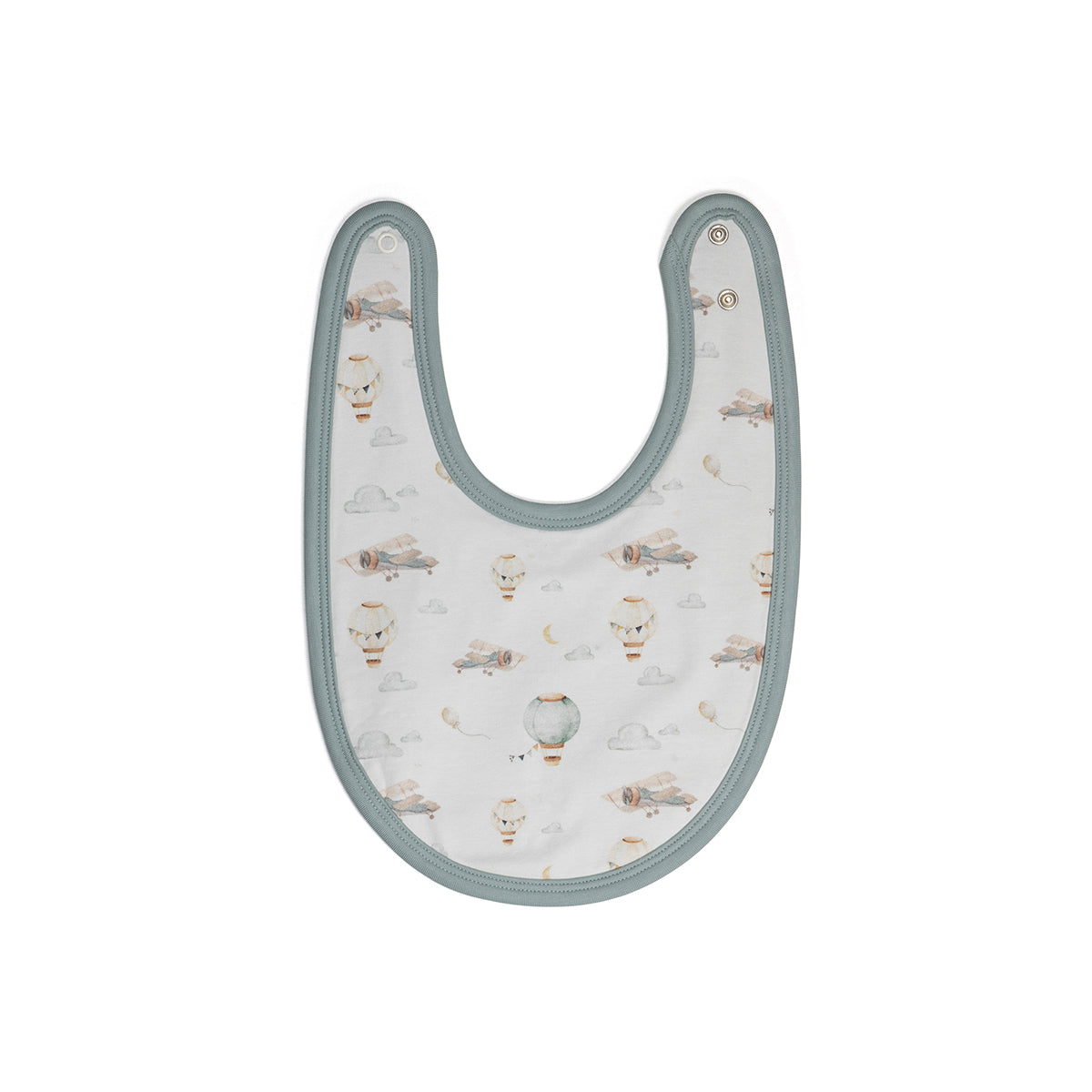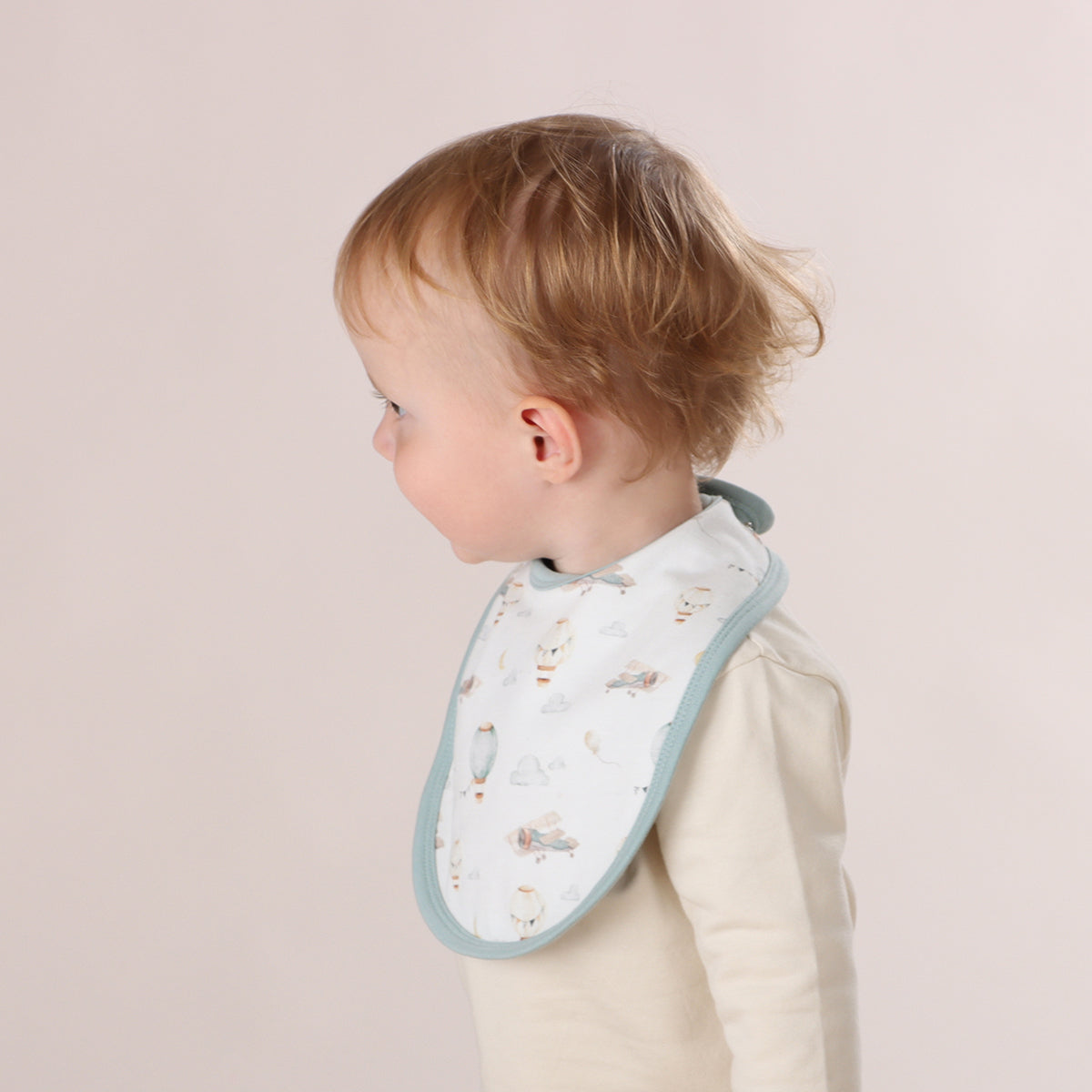Cotton Bib
Cotton Bib
SKU:UA404
Clothing Prem to 18 Months
| Size | Age Guide | Weight | Height |
|---|---|---|---|
| Premature | Premature or Small Newborn | Up to 4Kg | Up to 55cm |
| Newborn | 0-3 months | 4-6Kg | Up to 62cm |
| 3 Month | 3-6 months | 6-8Kg | Up to 68cm |
| 6 Month | 6-12 Month | 8-10Kg | Up to 76cm |
| 12 Month | 12-18 Month | 10-12Kg | Up to 84cm |
| 18 Month | 18-24 Month | 12-14Kg | Up to 92cm |
Clothing 2 to 6 Years
| Size | Age Guide | Height | Chest | Waist | Hip |
|---|---|---|---|---|---|
| 2 Year | 2-3 Years | Up to 100 cm | 56 | 51 | 58 |
| 3 Year | 3-4 Years | Up to 105 cm | 58 | 53 | 60 |
| 4 Year | 4-5 Years | Up to 110 cm | 60 | 55 | 62 |
| 5 Year | 5-6 Years | Up to 115 cm | 62 | 57 | 64 |
| 6 Year | 6-7 Years | Up to 120 cm | 64 | 59 | 66 |
Beanie Size Guide
| Size | Head Circumference | Age Guide |
|---|---|---|
| Premature | 31-35 cm | Premature or Small Newborn |
| Newborn | 35-40 cm | Newborn |
| Small | 40-43 cm | 3-6 Months |
| Medium | 43-47 cm | 6-18 Months |
| Large | 47-52 cm | 18-3 Years |
Sunhat Size Guide
| Size | Head Circumference | Age Guide |
|---|---|---|
| Newborn | 37-40 cm | Newborn |
| Small | 40-43 cm | 3-6 Months |
| Medium | 43-46 cm | 6-12 Months |
| Large | 46-49 cm | 12-24 Months |
| Xtra Large | 49-54 cm | 2-4 Years |
Sleep Pods Size Guide
| Size | Weight | Age Guide | Measurement(Back to Hem) |
|---|---|---|---|
| Newborn | 0-6 kgs | 0-3 Months | 60.5 cm |
| Small | 0-8 kgs | 3-6 Months | 66 cm |
Booties Size Guide
| Size | Age Guide |
|---|---|
| Newborn | 0-3 Months |
| Small | 3-6 Months |
| Medium | 6-12 Months |
| Large | 12-18 Months |
Pretty Brave Baby
| Foot Length (mm) | Insole Length (mm) | EU | UK | Age | INT |
|---|---|---|---|---|---|
| 95-104 | 110 | 16/17 | 2 | 0-6m | S |
| 104-114 | 118 | 18 | 3 | 6-12m | M |
| 114-123 | 127 | 19/20 | 4.5 | 12-18m | L |
| 123-137 | 142 | 21/22 | 5.5 | 16-22m | XL |
Pretty Brave 1st Walker
| Foot Length (mm) | Insole Length (mm) | EU | UK | Age |
|---|---|---|---|---|
| 114-120 | 125-128 | 19 | 3 | 1 yr |
| 120-126 | 132-135 | 20 | 3.5 | 1-2 yrs |
| 126-132 | 138.5-141.5 | 21 | 4.5 | 1-2 yrs |
| 132-138 | 145-148.5 | 22 | 5 | 2 yrs |
Crywolf Swim Nappy
| Size | Length (waist to crotch) | Crotch Width (side to side) |
|---|---|---|
| 0-1 yr | 1-2 yrs | |
| 37 | 38 | |
| 14.5 | 15.5 |
Crywolf Rash Suit
| Size | Length (back neck to crotch) | Chest (arm to arm) | Waist (side to side) | Sleeve (neck to cuff) | Neck Opening(diameter) |
|---|---|---|---|---|---|
| 6-12 Months | 1 yr | 2 yrs | 3 yrs | ||
| 40 | 42 | 44 | 46 | ||
| 25 | 26 | 27 | 28 | ||
| 24 | 25 | 26 | 27 | ||
| 30 | 31.5 | 33 | 34.5 | ||
| 13.25 | 13.25 | 13.8 | 14.3 |
In stock
Couldn't load pickup availability
Overview
Overview
Let your little dreamer soar, taking flight amongst the hot air balloons and fluffy clouds of this new Little Bee collection. Soft, breathable, and full of whimsy, it’s perfect for everyday adventures and sweet sky-high dreams
Keep your baby’s clothes free from dribbles or food with a Cotton bib. They conveniently dome at the back of the neck, making it easy to put on and take off. Take this bib anywhere as it easily slips into any bag, and it is very stylish, making it look great with any outfit.
Fit & Care
Fit & Care
Delivery and Returns
Delivery and Returns
- Delivery: Free within NZ on orders over $100 (excluding bulky items) or $8 standard shipping
- Returns: Accepted within 14 days of receipt with proof of purchase
- Some items are excluded from returns including sale items, hardware, car seats, prams, monitors and personal items - please click here for the full list.
Share this product
Recently viewed products
Related Blogs
Bottle-feeding: choosing the right bottles and teats
Finding the Right Bottle and Teat for Your BabySupportive tips for bottle-feeding families Whether you’re fully bottle-feeding or just introducing the occasional expressed feed, finding the right bottle and teat can help make feeding time easier and more comfortable for both you and your baby. There’s no one-size-fits-all - just options to suit different families, routines, and preferences. Let’s walk through some popular choices and how each can support your feeding journey. Bottle Materials: What Works for You? Plastic bottles are lightweight, shatterproof, and practical for everyday use. They’re great for busy parents on the move, and most brands now use BPA-free materials for peace of mind.Glass bottles are a classic choice. They’re easy to clean, don’t retain smells or stains, and hold up well to repeated sterilisation. Though heavier, many parents love them for their durability and purity.Silicone bottles are soft and squeezable, which can mimic the feel of breastfeeding more closely. Their flexible design is also easier for some babies to grasp as they grow.Stainless steel bottles are incredibly durable and a great long-term option. They maintain temperature well, making them perfect for outings or warmer climates, and they’re ideal for eco-conscious families. Bottle Shapes: Tailored to Your Baby Standard bottles are simple and familiar, working well for most babies.Wide-neck bottles are easier to fill and clean, and they often pair with wide teats that mimic the shape of the breast - handy if you’re switching between breast and bottle.Angled or ergonomic bottles offer an easier grip for little hands and can support a more upright feeding position, which may help with digestion.Anti-colic bottles feature internal vents or valves that reduce the amount of air your baby swallows during a feed. These are popular for babies with sensitive tummies or who experience wind or reflux. Teats: Comfort, Flow, and FeelChoosing the right teat is just as important as the bottle itself.Silicone teats are firm, odour-free, and long-lasting, making them a practical choice for most families.Latex teats are softer and more flexible, offering a more breast-like feel. They’re a good option for younger babies or those who prefer a gentler teat.Teat flow rates vary from slow to fast, with slow-flow best for newborns and faster flows suited to older babies who feed more quickly. Many brands offer variable-flow teats too, which can adapt as your baby grows.Teat shapes can be narrow, wide, or orthodontic. Wide teats are often designed to encourage a natural latch - helpful if you’re combining breast and bottle. Helpful Tips to Keep in Mind Start with a few different options - your baby will often let you know what they like. Check the flow rate regularly, and switch when feeds start taking too long or become too fast. Sterilise bottles and teats after each use to keep everything clean and safe. Replace teats at the first sign of wear and tear. Every baby is different, so it’s completely okay if it takes a little trial and error. The most important thing is that your feeding routine feels calm, nourishing, and works for your family. Shop our full range of bottles and teats here
Learn moreProducing quality products without the compromises
Producing quality products without the compromises Our commitment to our workers With most of the world’s fast fashion garments now made in Asia, the commitment to fair labour globally is sketchy at best. We believe it’s entirely possible to make a great product while caring about the environment, its workers and your little one too. Dimples’ dedication to producing high-quality New Zealand-made clothing hasn’t changed one bit since we started in 1992. Here’s how we put people at the heart of our product. Fabrics that put workers at the forefront From the origins of the raw materials through to dying and fabric manufacture, we choose materials that put people and the environment first – every step of the way. Homegrown merino – by choosing cosy merino grown right here at home, we know our local workers are getting well looked after. From fair working conditions on our Kiwi sheep stations to fair prices for the merino, New Zealand standards are adhered to throughout the process. Certified organic cotton – creating beautiful cotton without chemical fertilisers and pesticide protection is uncommon – and that’s a problem. Not only are farmers put at risk when they have contact with these chemicals, the run-off seeps into the waterways, affecting the food production and health of the whole community. We know that organic practices are best. From fibre to fabric – The majority of our fabrics are produced by ABMT in Melbourne, where our Aussie neighbour’s high labour standards and strict health and safety policies are adhered to. We’re proud to align with an ethical employer that also leads the way with its environmental policies. Production of the Dimples range Our ethically sourced fabrics aren’t jetted offshore for low-cost garment production. We employ a local team that puts our clothing and accessories together with love and care. Supporting the local economy and our workers With our strong focus on homegrown goods, we support fair employment, contribute to the local economy and keep our industry alive. Dimples employs skilled, full-time machinists that work from home, our garment cutters are just down the road from our head office and all our doming is done by a local business too. Encouraging work-life balance With many of our garments featuring our signature hand-embroidered bee and English rose, we have plenty of delicate embroidery work year-round. Our experienced embroiderers work from home and have the flexibility to fit bees and roses around their daily lives. Supporting diversity and gender equality We are an ethnically diverse team, with five nationalities currently represented by our employees. Dimples was founded and is still run by Jane Anne – women feature strongly in our leadership. Brands we stock align with our people-loving ethos We support and stock brands with a similar ethos to ours, making it easy for you to shop responsibly. Nuna With a focus on ‘creating consciously’, their emphasis on quality production is strong. As a result, Nuna conforms to OHSAS 18001 which is an international certification putting employees’ health and safety at the forefront. To read more about how Nuna products are responsibly made, visit them here . Stokke As a member of the Ethical Trading Initiative Norway , Stokke is an industry advocate for ethical best practices. Each step of the way, every supplier or partner of Stokke co-signs a code of conduct agreement to ensure proper working conditions, compensation and production methods are followed. Read more about their commitment to ethics and the environment here . Snuggle Hunny Snuggle Hunny is committed to sustainability with GOTS Certified organic cotton garments and a shift to compostable mailers, while offsetting carbon emissions through Greenfleet . The brand supports local communities by donating products to NICUs and charities like Sydney Children's Hospital and HeartKids, with 10% of Heart Collection sales going to support heart health in children. These efforts reflect Snuggle Hunny's dedication to both the environment and giving back to those in need. Read more about their sustainability efforts here . Doomoo Doomoo is all about sustainability, creating durable, multifunctional products designed to last. The brand focuses on using eco-friendly materials, and ensures much of their manufacturing is done locally in Europe. By prioritizing local sourcing, Doomoo reduces their environmental impact and supports regional economies. They also offer spare parts and care instructions to help families keep their products in top shape for years to come. Read more about how Doomoo is making a sustainable impact here. Clothing your babe minus the guilt Sweatshops and harmful production practices do not have to be the norm in our industry. As a brand, we have the power to put people (big and small) at the heart of what we do, and that’s proudly what we continue to do.
Learn moreFormula and bottle-feeding tips for new parents
Everything you need to know about bottle feeding During the first year, your baby goes through a great deal of growth and development. Most babies triple their birth weight by the time they hit their first birthday – so it’s no wonder they need lots of energy to grow! While it’s widely acknowledged that ‘breast is best’, choosing how you feed your baby is an important and completely personal decision. For some women, personal circumstance, cultural beliefs and physical or mental wellbeing mean breastfeeding isn’t an option, and therefore a safe alternative is required. If you’ve decided to bottle-feed (if you’re thinking about it, speak with your midwife, doctor or nurse first), it’s vital to have clear and well-informed information on the safe preparation and use of formula. Here’s what you need to know about formula-feeding your wee one: About baby formula Most formula is made from modified cow’s or goat's milk so the protein level isn’t too high and babies can digest it. Unlike regular milk, formula has added minerals, vitamins, and fats essential for human growth and development, and when prepared correctly, it contains enough nutrients for healthy growth in babies. In New Zealand, there are strict manufacturing regulations in place to make sure that the formula in your local supermarket is always of good quality and safe for your baby. But that doesn’t make the baby aisle any less overwhelming. Here’s a quick breakdown of the kinds of formula you can buy: Cow’s-milk formula Most cow’s-milk formulas sold in New Zealand have a similar nutritional profile – so price doesn’t necessarily mean one is better than another. Casein and whey are the proteins in breastmilk, and cow’s-milk formula has the same proteins. It will either have more casein or more whey – you can find the percentage of each noted on the formula’s ingredient label. Key points: Your baby’s first formula should contain whey as the main type of protein, as it’s the easiest to digest. Some formulas will be labelled ‘follow-on’ or ‘step 2’ – these are casein-dominant formulas best suited for babies aged six months and over. They’re also designed for hungrier babies who are not yet old enough to start solid food. Your baby can stay on the first formula for 12 months and as you start to introduce solids. If your child isn’t reacting well to cow’s-milk formula and you suspect an allergy, it’s best to seek advice from a healthcare professional who can advise you on alternative types of formula. Goat’s-milk formula This type of formula also contains whey and casein proteins, but the casein protein is slightly different from that in cow’s milk. It contains beta-casein (rather than alpha-casein) which is more easily digestible. Again, you can find the protein ratios outlined on the nutritional label. Soy infant formula Made using soya beans as a source of protein, soy infant formula is a vegetarian option. It’s best to seek advice from a healthcare professional before switching to the soy alternative. Gold formula Gold formula contains extra ingredients which aren’t strictly necessary for your baby – but may be beneficial. Here we explain a few: Long-chain polyunsaturated fatty acids (LCPUFAs). Thought to be important in the development of the brain and eyes. Alpha-lactalbumin. Thought to be nutritious for babies because it’s the main type of whey protein in breastmilk. Pro and prebiotics. These help promote the growth of good bacteria and may help maintain a healthy balance of gut bacteria. May be good for eye health. How to prepare baby formula Before you get started, always carefully read and follow the instructions on the formula tin – not all formulas have the same size scoops or are prepared in the same way. Check the use-by date and dispose of formula if it has expired. Bottle-feeding equipment Here’s what you’ll need to bottle-feed: Large bottles (saves you buying new ones as your baby grows) Bottle rings and caps Teats (either silicone or latex is fine, graded according to size of the hole or age of the baby) Bottle brushes Teat brushes A steriliser (optional) Check our handy guide to bottles and teats here! Making up a bottle of formula Step 1 : Boil the kettle and let the water cool for about 30 minutes, until it has reached a lukewarm temperature. You can also do this in advance, storing the cooled boiled water in sterilised bottles in the fridge. Step 2 : Pour the lukewarm water into the bottle before carefully adding the scoops of formula powder (levelling the powder with a clean knife or the tin's in-built level). Seal the bottle with a ring and cap, then shake gently to encourage the powder to dissolve. Step 3 : Before feeding your baby, check the temperature of the formula by tipping a few drops on the inside of your wrist – it should feel lukewarm. Never add anything to the formula, and if your baby doesn’t finish the bottle, throw any leftover formula away within an hour. Warming infant formula If you are not feeding your baby straight away, place formula in the fridge immediately (store at the back of the fridge) with a cap over the teat to prevent contamination. It can be stored for a maximum of 24 hours. Once removed, it’s only safe to use for up to one hour. The safest way to warm formula is to stand the bottle in a bowl of warm water for no longer than 10 minutes as harmful bacteria can grow in prepared formula. After warming, gently swirl the bottle to mix the formula, and test the temperature. If it’s too hot, cool it down by putting it in a bowl of cold water or by running it under the cold tap. Microwaving bottles is not recommended because uneven heating of the milk can burn your baby’s mouth. Cleaning and sterilising Hygiene is essential – your baby’s immune system isn’t strong enough to fight off some diseases yet, and formula-fed infants are at higher risk of gastrointestinal infection. You need to clean your bottles, teats, rings and caps after every feed and before you sterilise them. Tips for cleaning bottle-feeding equipment: Wash all bottles, rings, caps and teats in hot soapy water. Squirt water through the teat holes and use a bottle brush to ensure that everything is scrupulously clean, getting into all those nooks and crannies, then rinse well. Check for any cracks in the teats and throw away any damaged ones. Rinse everything well in hot water and leave them to air dry. After you’ve cleaned your equipment, you need to sterilise everything by boiling, steaming, or with chemicals. Boiling - To sterilise a baby bottle by boiling, place the disassembled bottle parts into a large pot and cover them fully with water. Bring the water to a rolling boil and let it boil for at least 5 minutes to ensure all parts are thoroughly sterilised. Use clean tongs to remove the items and place them on a clean, dry surface to air dry completely. You can buy electric (plug-in) or microwave steam sterilisers. These units 'cook' your equipment at a temperature high enough to kill bacteria. If using chemical sterilisers , follow the instructions on the box or packet. If you’re unsure, seek help from a professional Don’t be afraid to take your time deciding about feeding your baby. The most important consideration is that your baby is comfortable and well-fed, and you’re able to enjoy this special (albeit exhausting!) time with your newborn. Get the information you need to make an informed decision, and if you’re not sure, consult with your health professional, who’s in the best position to give you accurate advice for your baby and his or her needs.
Learn more

